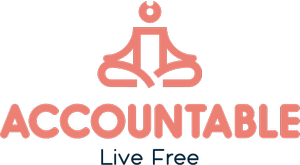What is CBT and How Does it Help with Co-Occurring Anxiety and Addiction?
What is CBT and How Does it Help with Co-Occurring Anxiety and Addiction?
What is Cognitive Behavioral Therapy (CBT)?
Cognitive behavioral therapy (CBT) is a form of therapy that is used to treat a wide array of difficulties. CBT is based on the idea that how we think (cognition), how we feel (emotion) and how we act (behavior) all interact together. Specifically, our thoughts determine our feelings and behavior. On the back end of this, our behaviors can then affect our thoughts and around and around we go. CBT aims to help people become aware of when they are making negative interpretations, and of behavioral patterns which reinforce distorted thinking. CBT helps people to develop alternative ways of thinking and behaving. In my time as a clinical therapist working with patients and clients dealing with addiction and anxiety, CBT was a main intervention that was used in order to help individuals heal and create new adaptive tools to cope.
Most individuals dealing with a substance use disorder are dealing with a co-occurring diagnosis such as anxiety. With that, CBT is a powerful therapeutic intervention for those who have both anxiety and a substance use disorder. Contrary to popular belief - anxiety is a healthy emotion to have. It means that we are aware of what is going on in our lives and it allows us to focus on the particular experience. Having said that, those who struggle with anxiety can oftentimes find that emotion out of control. When this happens, our ability to solve problems becomes impossible and irrational thoughts begin to creep in.
How does CBT work with people with anxiety?
CBT allows individuals to pin down their irrational thoughts and replace them with more rational ones. With enough practice, this will become a very effective tool for managing stress and anxiety.
How does CBT work for negative thought patterns?
Anxiety and stress can distort our thinking, especially in someone who carries with them a diagnosis with symptoms of acute anxiety. Thinking errors or “cognitive distortions” usually come in the form of negative thinking patterns. When this happens, the individual is likely to overestimate the likelihood of something going wrong and imagine the potential consequences as worse than they actually are. A great CBT tool for working with negative thought patterns is to challenge these thoughts. An individual can ask themselves questions such as: “Is this objectively true?” “Is this helpful to me?” “What is another, more rational way for me to look at this?” There are other “challenging” questions along this vein that can be helpful as well. When someone can take the time to think about these, it often has the ability to stop the negative thought pattern in its process.
What are some common CBT techniques and how can they lead to behavioral change for clients with anxiety and Addiction?
All of the aforementioned can be used for someone who is struggling with anxiety/substance use disorders. Challenging negative thoughts consistently with the aid of a therapist can help someone to develop the muscle of doing so when they find themselves “activated” with anxiety. Additionally, an easy to use technique such as the “ABCDE'' method of Rational Emotive Behavioral Therapy (REBT) is a very helpful tool. REBT comes from CBT and it involves identifying thoughts, feelings and behaviors in real time and coming up with a new effective belief system. The method goes as follows:
- Action or activating event - Something happens to you or the environment around you
- Beliefs about the situation - Self-beliefs/interpretations of the activating event
- Consequential actions - Your belief has consequences that include both emotions and behaviors.
- Dispute my beliefs - Challenge your beliefs to create new (positive) consequences.
- Effective new belief - The adoption and implementation of new beliefs.
This model can be practiced by any individual and utilized when experiencing anxiety and subsequent distressing thoughts. While behavioral change is absolutely something that can occur, it should be noted that anxiety and distressing situations are not just going to disappear. Life will happen and things will continue to be distressing. Where CBT is so helpful is that it allows an individual to continue to navigate in an adaptive way DESPITE these things happening.
I know for me, these tools are immensely helpful in my day to day. I like them because they are easy to follow and I can do them in the moment I am feeling any type of anxiety.




hello@youareaccountable.com
(646) 450-7641

